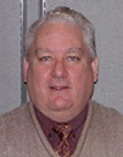
Please Note: The content on this page is not maintained after the colloquium event is completed. As such, some links may no longer be functional.
Phil Bording
Application Specific Parallel Computing Versus Microprocessors and a Big Switch
Wednesday, February 12, 2003
Building 3 Auditorium - 3:30PM
(Refreshments at 3:00 PM)
Dr. Phil Bording will talk about Application Specific Parallel Computing Versus Microprocessors and a Big Switch. The traditional notions of computing have suffered as extremely fast processors are now connected to what seems as and is slow memory. The growth of parallel computing using microprocessors was initially driven by the need for more memory space per application. Lately, system memory sizes have grown up in size and bandwidth, but not gotten any faster in terms of latency. Hence, performance is surffering and the future in absolute performance is bleak. Currently, climate codes use approximately ten percent of the microprocessor peak compute capacity, and scale poorly in the parallel paradigm.
In this presentation, Dr. Bording will discuss the current state of parallel computing and propose an alternative in architecture for several classes of algorithms. These application specific machines benefit from detail knowledge of the algorithms and provide high levels of achievable performance.
Dr. R. Phillip Bording is a Manager of Computational Science for the Computer Sciences Corporation working at NASA Goddard in the NASA Center for Computational Sciences. He received his computer science Ph.D, from the The University of Tulsa in 1995. His dissertation was titled, Wave Equation Difference Engine. He has an M.S. degree in Computer Science from the University of Alabama in Huntsville and a B.S. in Applied Mathematics from the University of Missouri at Rolla. He is a pioneer in computing having worked on finite element methods in the 1960�s for the design of gas turbine engines, parallel equation solvers in the 1970�s, seismic array expert systems using artificial intelligence in the 1980�s, and application specific computers in the 1990�s.
Dr. Bording has extensive petroleum industry experience and has co-authored a book on seismic modeling and seismic imaging. He regularly teaches courses and gives seminars on seismic modeling and imaging, and is an advocate for education in the sciences of computation. He authored the case study in seismic modeling and reverse time imaging in the landmark Computational Science Education Project (CSEP) e-book copyright 1991, http://csep1.phy.ornl.gov/csep.html.
IS&T Colloquium Committee Host: John Dorband
